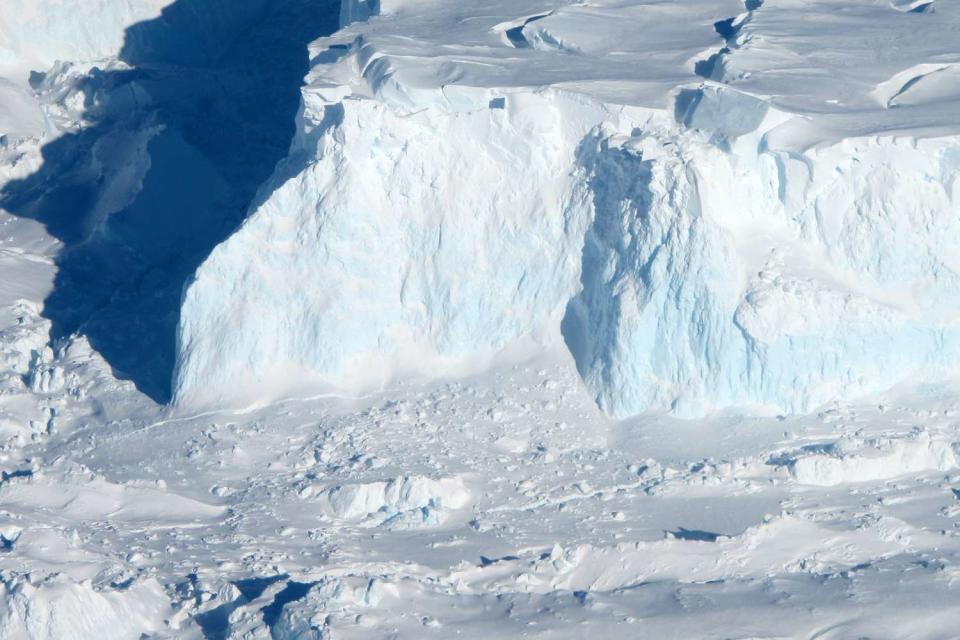$3.6M Vessel Goes Missing Underneath Antarctica's 'Doomsday Glacier': 'Something Unexpected Happened'
Ran, an uncrewed research vessel owned by the University of Gothenburg in Sweden, was last heard from in January

NASA
Antarctica's "Doomsday Glacier"An uncrewed research vessel has gone missing under a massive "Doomsday Glacier" in Antarctica
The 23-foot-long vehicle, which can travel to depths of 1,600 feet, was last heard from the weekend of January 27
The vessel, which is named Ran, has provided important data about the colossal glacier — which has significant climate implications
An uncrewed research vehicle has gone missing under the “Doomsday Glacier” in Antarctica, according to its owner.
Ran, owned by the University of Gothenburg in Sweden, was last heard from the weekend of January 27 while on an expedition under the Thwaites Glacier, also known as the "Doomsday Glacier," the university said in a press release.
“During January of this year, Ran completed several successful dives under Thwaites, but during the last planned dive of the expedition, something went wrong,” Professor Anna Wåhlin, the project’s leader, said in a statement. “After a long journey under the ice, the AUV [unmanned underwater vehicle] did not appear at the programmed rendezvous point.”
Wåhlin added that the support vessel RV/IB Araon then “aborted the homeward journey and searches were conducted with acoustic search equipment, helicopters and drones, without success.”
Related: Hurricane Scale Should Be Extended to Include a Category 6, According to Some Climate Scientists
“In the end, it was just a matter of realizing that Ran had been lost,” Wåhlin said.
The vessel, which is about 23 feet in length and cost about $3.6M (38 million Swedish Krona) was on its second visit to the Thwaites Glacier. In the past, it has provided consequential data about the colossal glacier in West Antarctica — one which has significant climate implications.
Never miss a story — sign up for PEOPLE's free daily newsletter to stay up-to-date on the best of what PEOPLE has to offer, from celebrity news to compelling human interest stories.
“Thanks to Ran, we became the first researchers in the world to enter Thwaites in 2019, and during the current expedition we have visited the same area again,” Wåhlin said. “Even if you see melting and movements in the ice from satellite data, from Ran we get close-ups of the underside of the ice and information about exactly which mechanisms are behind the melting.”
Related: 4.0 Magnitude Earthquake Reported Off Florida's Space Coast Ahead of Rocket Launch: ‘Pretty Rare’
The Thwaites Glacier is roughly the size of Florida, according to CNN.
It acquired its “Doomsday” moniker due to its potential to raise global sea levels by meters if it were to melt completely, Wåhlin said.
Related: 'Titan' Sub Passengers 'Died Instantly' in Implosion, Expert Says: 'Terrible, Tragic Thing'
For now, there is no sign of the AUV, which traveled to depths of about 1,600 feet.
“It's a bit like looking for a needle in a haystack, but without even knowing where the haystack is,” Wåhlin said. “At this point, Ran's batteries are dead. All we know is that something unexpected happened under the ice. We suspect it ran into trouble, and then something prevented it from getting out.”
For more People news, make sure to sign up for our newsletter!
Read the original article on People.

